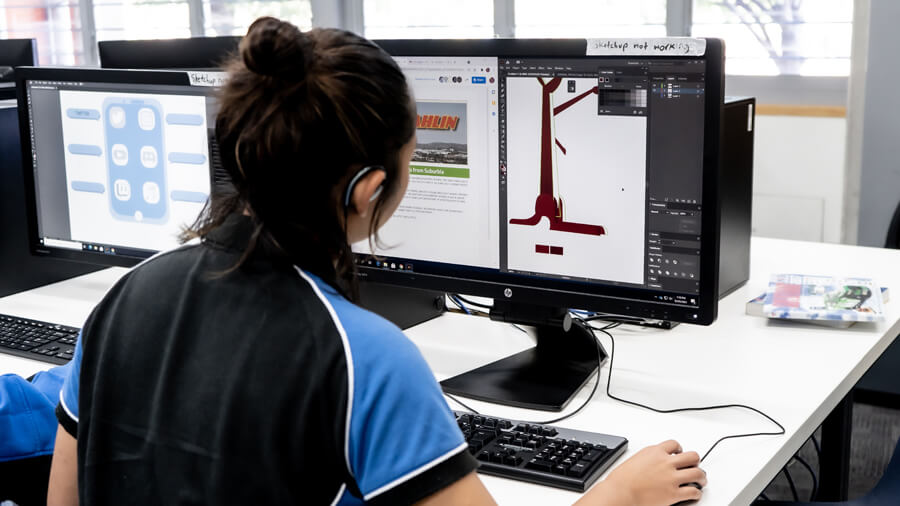
Course information
The study of Design and Graphics focuses on exploring the purposeful use of technologies and creative processes to produce design solutions. Students acquire knowledge and develop skills using technologies and other processes appropriately, to design and create graphic solutions. Students use industry software including Adobe Illustrator, InDesign and Photoshop to create design solutions to problems. Projects include T-shirt graphics, logo design, signage, awareness campaigns, poster design and more. Design and Graphics provides pathways in a range of related fields such as architecture, digital 3D modelling, industrial design, engineering, interior design, graphic design, furniture design, fashion, jewellery, ceramics, textiles, and trade-based careers.
Course pattern
Available as a Minor or Major.
Suggested Minor course
Semester | Unit |
|---|---|
1 | Design Applications |
2 | Design for a Client Brief |
Suggested Major course
Semester | Unit |
|---|---|
1 | Design Applications |
2 | Design for a Client Brief |
3 | Visual Communication |
4 | Design for Screen & Media |
Unit descriptions
Design Applications
In this unit, students learn graphic design principles which focus on solving design problems, presenting ideas and solutions as graphical products. They explore a range of mediums to create practical solutions to design problems. The purpose of this unit is to build skills such as sketching and modelling. Students create a finished product for a specified purpose. They create solutions using a range of processes, applying industry conventions and standards where applicable.
Design for a Client Brief
In this unit, students learn how to interpret a design brief based on needs analysis and task identification. They research the client’s and target users/audience needs considering ethical considerations, financial constraints and affordances, meeting deadlines and deliver a product that is fit for purpose. This unit develops the knowledge and skills to generate concepts and solutions in response to design briefs in a range of real-world contexts.
Visual Communication
In this unit, students learn to use graphics to inspire, inform or persuade a target audience using a range of graphical techniques. Drawing on current issues in society, students create a visual campaign in response to a design brief.
They learn to create graphic images using colours, textures, contours and shapes to communicate emotions, attitudes and experiences.
Design for Screen & Media
In this unit, students learn to develop designs for a range of platforms including social media, video sharing, digital newspapers and mobile platforms. They use research to understand how the relevant technology can be used to meet the requirements of the given brief. Students develop skills to solve problems in converting products across multiple platforms. Students build knowledge of data conversion, data storage and data manipulation. They create media files, drawing on the technical aspects of design within a digital framework.
